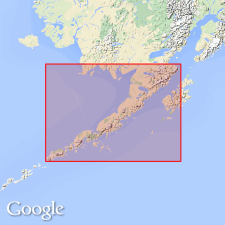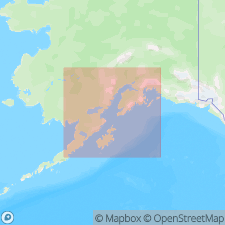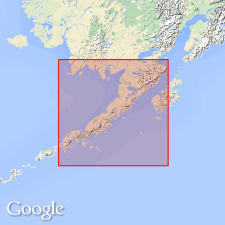
- Usage in publication:
-
- Herendeen limestone*
- Modifications:
-
- Named
- Biostratigraphic dating
- Dominant lithology:
-
- Limestone
- AAPG geologic province:
-
- Alaska Peninsula province
- Alaska Southwestern region
Summary:
Occurs in two outcrops from Herendeen Bay to Port Moller, Alaska Peninsula, southwestern AK. Consists of arenaceous limestone of light-gray color, locally cross-bedded and fossiliferous. Is 800 ft thick. Conformably overlies Staniukovich shale (new); underlies Chignik formation (new). Invertebrate fauna identified by T.W. Stanton (list and localities given) indicate age is Early Cretaceous.
Source: GNU records (USGS DDS-6; Menlo GNULEX).

- Usage in publication:
-
- Herendeen limestone*
- Modifications:
-
- Biostratigraphic dating
- AAPG geologic province:
-
- Alaska Peninsula province
- Alaska Southwestern region
Summary:
Herendeen limestone contains BUCHIA CRASSICOLLIS and is of Valanginian age (Imlay and Reeside, 1954).
Source: GNU records (USGS DDS-6; Menlo GNULEX).

- Usage in publication:
-
- Herendeen Formation*
- Modifications:
-
- Redescribed
- AAPG geologic province:
-
- Alaska Peninsula province
- Alaska Southwestern region
Summary:
Unit everywhere redescribed as Herendeen Formation based on its lithic diversity. Reference section designated in sec. 14, T. 50 S., R. 73 W., Port Moller D-2 quadrangle (scale 1:63,360) where unit is 270 m thick. Age is given as Early Cretaceous.
Source: GNU records (USGS DDS-6; Menlo GNULEX).
For more information, please contact Nancy Stamm, Geologic Names Committee Secretary.
Asterisk (*) indicates published by U.S. Geological Survey authors.
"No current usage" (†) implies that a name has been abandoned or has fallen into disuse. Former usage and, if known, replacement name given in parentheses ( ).
Slash (/) indicates name conflicts with nomenclatural guidelines (CSN, 1933; ACSN, 1961, 1970; NACSN, 1983, 2005, 2021). May be explained within brackets ([ ]).

